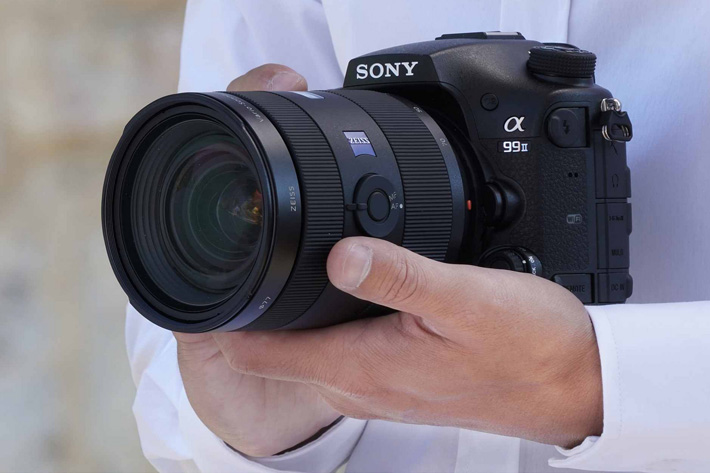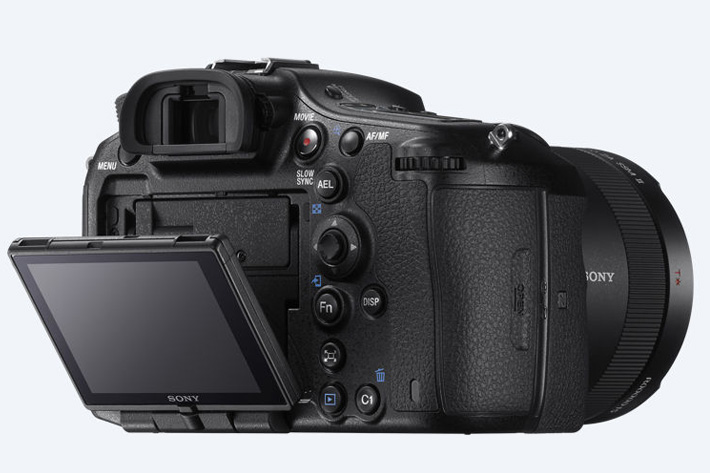
Sony’s Alpha 99 II is not only the sign that the A-mount inherited from Minolta a decade ago is still alive and kicking. It points to a new direction in terms of control when it comes to video.
We’ve covered the theme of HFR or higher-frame-rate video multiple times here at ProVideo Coalition lately, for one good reason: it is happening. While changing frame rates is nothing absolutely new when it comes to cinematography, especially since the introduction of digital cameras, the option has been reserved for some, let’s call them high-end models, and not available in a camera like the Sony Alpha 99 II, which is an SLT (Single Lens Translucent) available for a little over $ 3,000.
The German film director F.W. Murnau once wrote that he wished he had “a camera that can move freely in space… that at any moment can go anywhere, at any speed” and stated that only with this essential instrument “we shall be able to realize new possibilities”. Murnau used different techniques available at the time, and Nosferatu, from 1922 is an example of the use of speed ramping. One can only imagine what F.W. Murnau would do if he had the same tools Ang Lee used for his recent “Billy Lynn’s Long Halftime Walk”.

What was once a dream for cinematographers is now a reality: control over frame rate is available right under your fingertips, offering new options at the capture stage. In fact, the Sony Alpha A99 II has it, opening a new era in terms of what cameras in this segment can offer. While it is true that its price places it above what most people will want to pay for a camera, the simple fact that the technology is developed and implemented means that it will soon be a common feature in cameras from different segments. F.W. Murnau’s dream of “a camera that oustrips present film techniques and fulfills cinema’s ultimate goal” is coming closer each new day.
As a camera, the Sony Alpha 99 II represents the new SLT top of the line for the A-mount. The newly developed Phase Detection AF System is capable of ‘full-time AF’ and is the first implementation of 4D FOCUS in the full-frame Alpha series, bringing a new level of AF performance to Alpha A99 II users. The Hybrid Phase Detection AF System is enabled by combining a precision 79-point dedicated phase detection AF sensor with 399 focal plane phase detection AF points, to produce a 79 hybrid cross AF point array. It should be noted, though, that the number of usable AF points may depend on the lens and shooting mode. Up to 323 focus points are selectable, but the system is not available for movie recording.
The AF cross points on the Alpha 99 II deliver, says Sony, incredibly precise autofocus performance and advanced subject tracking of any moving objects right across the image, at high speed. In addition, as there is no moving mirror, TMT enables continuous AF operation and the finder image remains unaffected during any type of shooting, including live view and movie recording.
While many of the new features of the camera are geared towards photography, the Sony Alpha 99 II is also designed as a video tool, as the changes to the silent Multi Controller introduced in the original Alpha 99 show: the new version has been improved so that in addition to allowing control of aperture, shutter speed, ISO, exposure compensation, AF area, AF mode and other settings, it now features a click-stop ON/OFF switch. When ON, the preferred setting for still image shooting, the control clicks, providing a tactile indication of the length of rotation. When OFF, the control turns smoothly and quietly, ideal for movie shooting.
The new 5-axis SteadyShot inherited from the Alpha 7 II series of cameras was redesigned for the A-mount. In addition to movement in the pitch and yaw axes that tend to occur at longer focal lengths, this system effectively detects and compensates for shift blur that can occur on the X and Y axes when shooting close-up, and roll blur that is often apparent in still images and movies that are shot at night. Newly implemented precision gyro sensors are capable of precisely detecting even tiny camera movements that can cause blurring, providing a 4.5 step shutter speed advantage that can help realize the full potential of the 42.4MP sensor, in both stills and movies. The effect of image stabilization can be monitored in the viewfinder or on the LCD screen during live view when the shutter button is half pressed or the Focus Magnifier functions are used. This allows framing and focus to be accurately checked via live view when shooting at telephoto focal lengths or macro distances.
The video specifications of the Alpha 99 II are in line with what one expects from a Sony camera, although some, like internal recording, are a first for an A-mount camera. So, the Alpha 99 II enables internal 4K movie recording featuring full pixel readout, without pixel binning (in Super 35mm recording mode), for ultimate high resolution video in the pro friendly XAVC S format. A SDHC/SDXC memory card of Class 10 or higher is required for movie recording in the XAVC S format. The camera is capable of recording high quality footage at 100Mbps for 4K recording using a UHS-I (U3) SDHC/SDXC card.
The absolutely new feature is the ‘Slow and Quick’ mode (S&Q), which supports both slow motion and quick motion. Frame rates from 1 fps to 120 fps NTSC (100 fps PAL) can be selected in 8 steps for up to 60x NTSC (50x PAL) quick motion and 5x NTSC (4x PAL) slow motion recording. Sound cannot be recorded in this mode and a SDHC/SDXC memory card of Class 10 or higher is required. Despite the – normal – limitations, the feature is promising and it will be interesting to see what videographers use it for.
The Alpha 99 II also includes a number of features designed for a professional movie production workflow. Picture profiles, time code and HDMI clear output are present, and the new Alpha 99 II also offers gamma assist for real time S-Log monitoring and a zebra mode for easier exposure adjustment. S-Log3 and S-Log2 gamma are included, making wide dynamic range shooting possible with blown highlights or blocked shadows making the camera easily integratable into a fully professional movie production workflow.


